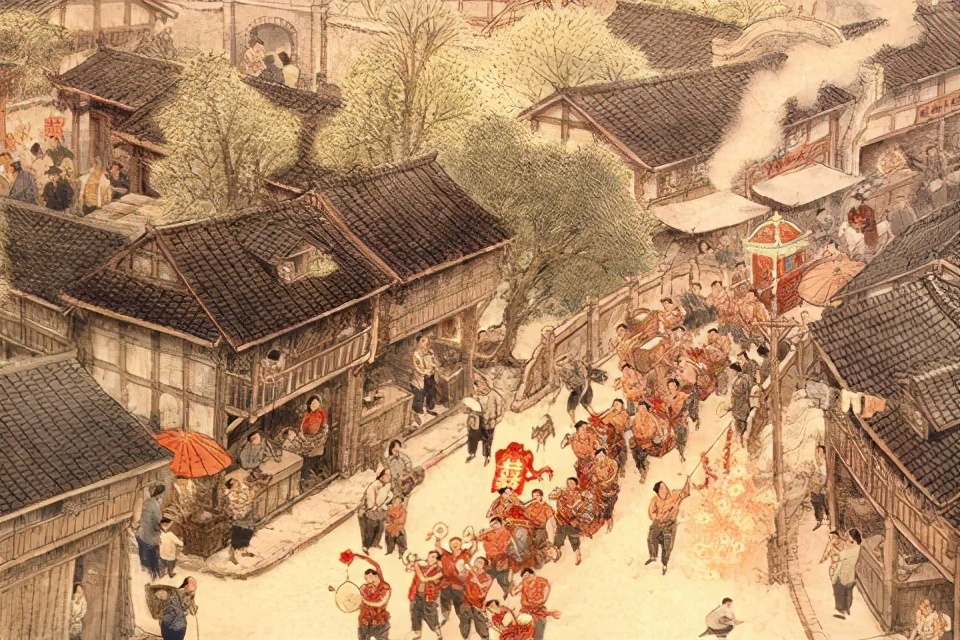Wen | Liang Ruji
The subsequent revision by Zhang Fan was called the Later Han Dynasty, which was an unfinished work, so it was neither published nor circulated, and soon dissipated in the wheel of history. The fate of Xue Ying and Yu Zhou's "Later Han Dynasty" is no different from this.
Rejecting the writings of the previous generation, it is time for the Western Jin Dynasty of "pen to you, you to do it". The Western Jin Dynasty took on this important responsibility under the name of Hua Zheng, who was the grandson of Cao Wei's famous scholar Hua Xin. Coming from a literary family, he has read a lot of books since he was a child, cultivating Hua Zhao's interest in history, because he saw many loopholes in the "Dongguan HanJi", he made up his mind to write a history of the Eastern Han Dynasty himself. At the recommendation of a friend, Hua Yu was transferred to the secretary supervisor in charge of the national collection and editing work as he wished, paving the way for writing.
His history of the Eastern Han Dynasty is called the Book of the Queen of Han, which is a complete account of the story of what happened during the 195 years of the Eastern Han Dynasty. It is worth mentioning that Hua Zhao's Book of Han hou changed the tradition of listing empresses as "Foreign Relatives" in the "Book of Han", and directly elevated them to the "Benji" system of equal status as the emperor. Although this point has precedents to follow in the "History of Lü Hou Benji", it is more reflected in Hua Zhao's recognition of women and the exclusive account of the unique political style of the Eastern Han Dynasty, the characteristics of female protagonists taking turns. Since this is the era of "great heroines", why can the heroines only hide in the vast biographies listed for their courtiers? They were completely Han daughters-in-law who cooperated with the emperor, and the official family of the Han Dynasty.
After the completion of the Book of The Queen of Han, the great literary magnates of the Western Jin Dynasty taught praise one after another, and the leaders of the literary circles praised the book for having "the rules of relocation and the wind of recording", and raised Hua Yu to a height of Sima Qian and Ban Gu. As a history book officially supported by the Western Jin Dynasty and officially collected, the future of the Book of Hanhou should have soared, ranked among the top four histories, and become a model for future generations to learn and watch, but unfortunately, the sea of people had ups and downs, and everything also had a life of ups and downs, with the "Yongjia Rebellion" in the last years of the Western Jin Dynasty, the secret house of the Western Jin Dynasty was burned down and flattened, most of the chapters of the Book of The Book of Han hou suffered the fate of being lost first, and the remaining 30 fragments were gradually scattered in people's memories in the chaotic world of the later "Wuhu" into the Central Plains.

During the Western Jin Dynasty, the "Book of Continuation of The Han Dynasty" with the surname sima biao in the historical circles was also once very popular, although there was no change in style from the previous history books, but according to the historical characteristics of the Eastern Han Dynasty, he followed Sima Qian's example and set up a combination of "class biography" for people of the same class and the same hobby, such as Dang Gong, Cool Officials, Eunuchs, Ru Lin, Wen Yuan, Du Xing, Yi Min, etc. This setting also influenced the later Fan Ye, who was praised as "innovative" in Fan Ye's Book of the Later Han Dynasty, almost copied from Sima Biao. Therefore, after Fan Ye's "Book of the Later Han" came out, this "Book of the Continuation of the Han Dynasty" was gradually slapped to death on the beach by Houlang.
Because many costs of the Western Jin Dynasty had been lost, Xie Shen of the Eastern Jin Dynasty fought again with drums and wrote a tome of the Book of the Later Han Dynasty, but unfortunately, this masterpiece that made the author painstakingly carved half a life was already lost by the Time of the Sui Dynasty after experiencing the chaos of the Southern and Northern Dynasties. Yuan Shansong's Book of the Later Han Dynasty also ended up in the same way, and eventually could only appear in other people's citations of ancient books. Another historian surnamed Yuan Hong, Yuan Hong's "Later Han Dynasty" is a chronicle of the broken dynasty, which records the history from the peasant revolt at the end of Wang Mang's new dynasty to the Cao Wei Dynasty, but because people always regard him as a writer, the attention to the "Later Han Dynasty" has been greatly reduced. Zhang Ying's "Later Hannan Chronicle" is lost quickly and fiercely, and there is basically nothing worth saying.
Qianlang was either hidden in the snow or killed in battle, so let's take a look at the writing and circulation process of Fan Ye's version of the Book of the Later Han Dynasty.